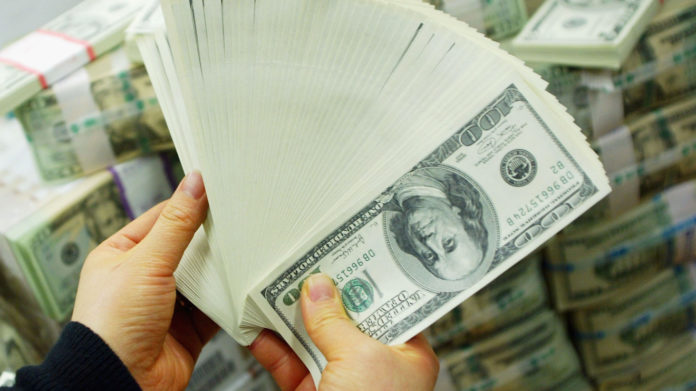The dollar was little changed on Monday, following losses from the prior session that came after the U.S. jobs report dampened expectations of aggressive interest-rate hikes from the Federal Reserve. Analysts are now turning to Tuesday’s consumer-price inflation data, another indicator for future Fed policy, which could give the dollar more direction.
Traders were also waiting for two key Treasury auctions this week to gauge foreign appetite for U.S. debt in wake of President Donald Trump decree focused on tariffs on steel and aluminum imports.
What are currencies doing?
The ICE U.S. Dollar Index
DXY, -0.13%
was little changed in negative territory at 90.061, losing ground for a second straight session. The WSJ U.S. Dollar Index
BUXX, -0.14%
which is a measure of the buck against a broader basket of rivals, was off by 0.1% at 83.71.
The greenback fell against Japan’s yen
USDJPY, -0.31%
buying ¥106.55 compared with ¥106.81 late Friday in New York.
The euro
EURUSD, +0.1381%
was also little changed, buying $1.2307. Meanwhile, the British pound
GBPUSD, +0.3250%
rose to $1.3902, rising from $1.3848 on Friday.
The Australian dollar
AUDUSD, +0.1912%
rose to $0.7872, up from $0.7847 on Friday, boosted by news the country will be exempt from the U.S. tariffs on steel and aluminum imports.
What is driving the market?
The dollar softness on Monday came as traders digested last week’s U.S. jobs report that showed disappointed on wage growth, and looked ahead to Tuesday’s CPI numbers. Both wage and consumer-price inflation are key factors for the Fed in setting interest rates, and the mixed jobs report was seen as doing little to compel the central bank to raise rates more than three times this year.
After faster-than-expected wage growth in January, traders had started to speculate that the Fed might hike four times in 2018 to keep inflation under control. The Chicago Fed’s Charles Evans said on Friday after the data that it was a strong report, but that he would like to see stronger wage growth.
Dollar investors were also watching the potential fallout from President Donald Trump’s new tariffs on steel and aluminum exports.
On Monday, Trump tweeted that Commerce Secretary Wilbur Ross would be speaking to representatives of the EU trade barriers. The EU has been critical of Trump’s metals tariffs and promised to retaliate with tariffs on American-made goods.
Analysts at ING said the tariffs “merely corroborate” the administration’s desire for a weaker greenback, potentially prompting foreign buyers to shy away from U.S. Treasurys. Additionally, U.S. trading partners hit by the tariffs could launch a “collective buyers’ strike” on Treasurys as a way of “subduing the enemy via a more indirect form of attack.”
Lower demand for U.S. debt could lead to weaker demand for the dollar and further weaken the currency. There are two important Treasury auctions this week that will test foreign investor appetite, according to ING: A 10-year
TMUBMUSD10Y, -0.38%
auction on Monday and a 30-year
TMUBMUSD30Y, -0.69%
auction on Tuesday.
What are strategists saying?
“The prospect of a global trade war may just well have lit a fuse under this [lower dollar demand]—with major trading partners potentially rotating out U.S. debt holdings at a quicker pace (or at least using the threat of this as a negotiating tool). Watch the U.S. Treasury auction space this week—with the dollar trading soft given the Trump policy uncertainty,” analysts at ING said in a note.
What else is on deck?
The Federal budget for February is due to be reported at 2 p.m. Eastern. The previous figure showed a deficit of $192 billion.
Source : MTV












